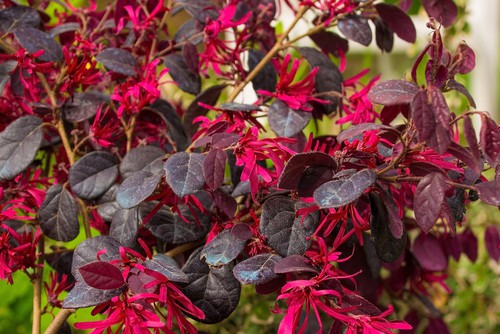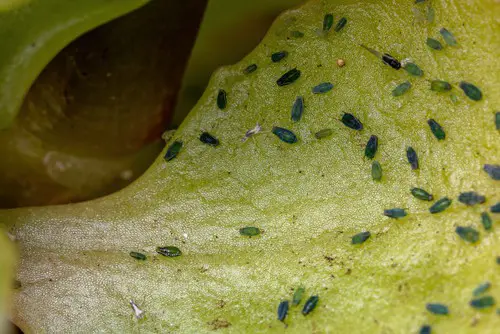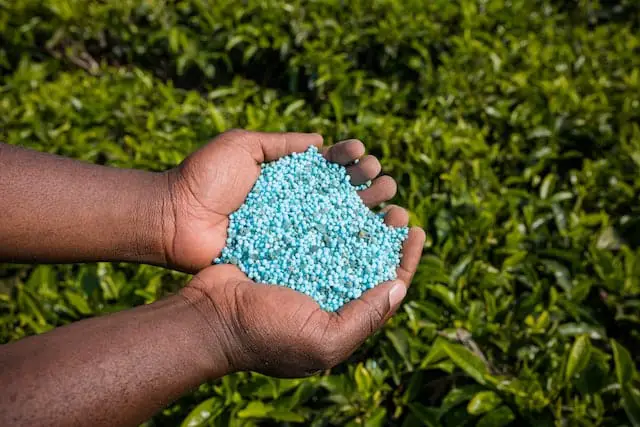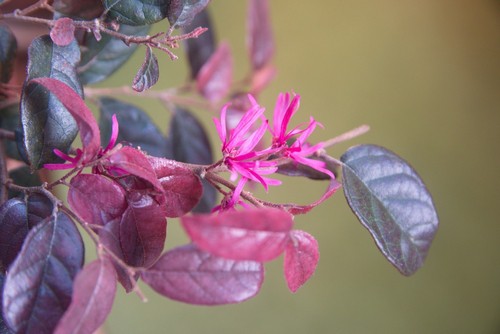Loropetalum is a beautiful shrub that is known for its vibrant foliage and delicate flowers. However, it can be disheartening to see loropetalum leaves turning brown.
Brown leaves on Loropetalum can be caused by a number of factors, including watering problems, pests and diseases, and environmental factors. Understanding the causes of brown leaves is crucial to taking the right steps to prevent it from happening again.
Identifying the cause of brown leaves is the first step in fixing the problem. It is important to check the plant’s environment, watering schedule, and any signs of pests or disease.
Once the cause is identified, proper care can be taken to help the plant recover. Proper care for Loropetalum includes planting it in the right location, providing adequate water and nutrients, and pruning it regularly. With the right care, Loropetalum can thrive and provide beauty to any landscape.
Key Takeaways
- Identifying the cause of brown leaves is crucial to fixing the problem.
- Proper care for Loropetalum includes planting it in the right location, providing adequate water and nutrients, and pruning it regularly.
- With the right care, Loropetalum can thrive and provide beauty to any landscape.
Related posts:
Understanding Loropetalum

Loropetalum is a species of shrub that is also commonly known as Chinese fringe flower. It is an evergreen plant that is native to Japan, China, and the Himalayas. Loropetalum is a popular ornamental shrub that is grown for its attractive foliage and flowers.
There are several varieties of loropetalum available, including dwarf, medium-sized, and tall types that weep or grow upright. Taller ones grow faster than smaller ones. Most are hardy in USDA Zones 7 to 10.
Loropetalum shrubs are part of the witch-hazel family and are known for their beautiful flowers that bloom in the spring. The flowers are usually pink, red, or white and are often fragrant.
The leaves of loropetalum are usually green, but they can turn brown for a variety of reasons. Understanding the causes of brown leaves on loropetalum can help gardeners take appropriate action to prevent or treat the problem.
Identifying Brown Leaves
Loropetalum is a beautiful plant that can add a pop of color to any garden. However, if you notice brown leaves on your Loropetalum, it can be a sign of an underlying problem. Identifying the cause of brown leaves is the first step in fixing the issue.
1. Brown Leaves
Brown leaves on Loropetalum can be a sign of several problems, including watering issues, pests, diseases, and environmental factors. If the leaves are turning brown and crispy, it could be a sign of too much nitrogen in the soil.
Flushing the soil with clean water for 10-20 minutes can help reduce the amount of nitrogen and save the plant.
2. Leaves Turning Brown
If the leaves are turning brown and falling off, it could be a sign of root rot caused by overwatering. In this case, reducing the frequency of watering can help the plant recover. If the leaves are turning brown and wilting, it could be a sign of underwatering. In this case, increasing the frequency of watering can help the plant recover.
3. Yellowing Leaves
Yellowing leaves on Loropetalum can be a sign of nutrient deficiency, particularly iron. Adding iron-rich fertilizer to the soil can help the plant recover. If the yellowing is accompanied by brown spots, it could be a sign of fungal infection. In this case, removing the infected leaves and treating the plant with a fungicide can help.
Loropetalum Leaves Turning Brown – 4 Common Problems

Loropetalum is a beautiful evergreen shrub with stunning foliage and vibrant flowers. However, brown leaves can be a sign that something is not quite right with your plant. Here are some common causes of brown leaves on loropetalum:
1. Overwatering and Root Rot
Overwatering is a common cause of brown leaves in loropetalum. When the soil is constantly wet, it can lead to root rot, which can cause the leaves to turn brown and fall off.
To avoid overwatering, make sure your loropetalum is planted in well-draining soil. It’s also important to water your plant deeply but infrequently, allowing the soil to dry out between waterings.
2. Disease and Pests
Disease and pests can also cause brown leaves on loropetalum. Fungal diseases such as anthracnose and powdery mildew can cause the leaves to turn brown and fall off.
Pests such as spider mites and scale insects can also cause damage to the foliage. To prevent disease and pests, make sure your loropetalum is planted in well-draining soil and is properly pruned and fertilized.
3. Inadequate Sunlight and Temperature
Loropetalum requires full sun to partial shade and warm temperatures to thrive. If your plant is not receiving enough sunlight or is exposed to cold temperatures, the leaves can turn brown and fall off.
To ensure your loropetalum is getting enough sunlight, plant it in a location that receives at least 6 hours of direct sunlight per day. Additionally, protect your plant from frost and cold temperatures by covering it with a blanket or tarp.
4. Poor Soil Conditions
Loropetalum prefers well-draining soil with a pH between 5.0 and 6.5. If the soil is too alkaline or too acidic, it can cause the leaves to turn brown and fall off. Additionally, poor soil conditions can lead to nutrient deficiencies and waterlogged roots, which can also cause brown leaves.
To ensure your loropetalum is planted in the right soil conditions, test the soil pH and make any necessary adjustments. Additionally, make sure the soil is well-draining and not waterlogged.
Proper Care for Loropetalum

Loropetalum shrubs are relatively low-maintenance plants that are easy to grow if they are given the proper care. Proper care includes providing adequate water, sunlight, and nutrients, as well as regular pruning and maintenance.
In this section, we will cover the essential aspects of caring for Loropetalum, including watering and fertilizing, location and sunlight requirements, and pruning and maintenance.
1. Watering and Fertilizing
Loropetalum shrubs require regular watering, especially during the hot summer months. They prefer well-drained soil that is moist but not waterlogged.
In general, Loropetalum should be watered deeply once a week, but this may vary depending on the location, climate, and soil type. Regular watering will help to prevent the leaves from turning brown due to drought stress.
Fertilizing Loropetalum can help to promote healthy growth and prevent nutrient deficiencies. Slow-release fertilizers are recommended, as they provide a steady supply of nutrients over time.
Fertilizer should be applied in the spring and fall, following the manufacturer’s instructions. Over-fertilization can lead to fertilizer burn and cause the leaves to turn brown, so it is important not to apply too much fertilizer.
2. Location and Sunlight Requirements
Loropetalum shrubs prefer full sun to partial sun, with some afternoon shade in hot climates. They can tolerate a wide range of soil types, but they prefer well-drained soil that is slightly acidic. Loropetalum should be planted in a location that is protected from strong winds, as this can cause the leaves to dry out and turn brown.
3. Pruning and Maintenance
Pruning Loropetalum is essential for maintaining its shape and promoting healthy growth. The best time to prune Loropetalum is in the late winter or early spring, before new growth begins.
Dead or damaged branches should be removed, as well as any branches that are crossing or rubbing against each other. Pruning can also help to promote more flowers and prevent the shrub from becoming too leggy.
Regular maintenance, such as removing dead leaves and debris, can also help to prevent disease and pest problems. Loropetalum is relatively resistant to pests and diseases, but it can be susceptible to root rot if the soil is too wet. Avoid overwatering and make sure the soil has good drainage to prevent this from happening.
Planting and Establishing Loropetalum

Loropetalum is a low-maintenance shrub that is easy to grow. It can be planted in both gardens and containers. Here are some tips for planting and establishing Loropetalum:
1. Planting in the Ground
When planting Loropetalum in the ground, it is important to choose a location that gets partial sun to partial shade. The best location is a place that gets morning sun and afternoon shade. However, these plants can tolerate full sunlight conditions as well. Make sure to pick a space that allows the shrubs to grow into and have enough room.
Loropetalum needs rich, loamy, loose, slightly acidic to neutral soil (4.0 to 7.0 pH) that drains quickly. Before planting, it is recommended to amend the soil with compost or other organic matter to improve drainage and provide nutrients.
When planting Loropetalum, dig a hole twice as wide as the root ball and slightly deeper than the height of the root ball. Gently loosen the roots and place the plant in the hole. Backfill with soil and water thoroughly.
2. Planting in Containers
Loropetalum can also be planted in containers. When planting in pots, make sure to choose a container that is at least 2-3 times larger than the root ball. Use a high-quality potting mix that is well-draining and rich in organic matter.
When planting in containers, it is important to water regularly to prevent the soil from drying out. Fertilize every 4-6 weeks during the growing season with a balanced fertilizer.
3. Establishing Loropetalum
After planting Loropetalum, it is important to water regularly to establish the roots. Water deeply once a week during the first growing season. After that, Loropetalum is drought-tolerant and can go longer periods without water.
To help establish Loropetalum, add a layer of mulch around the base of the plant. This will help retain moisture and suppress weeds.
In addition, it is recommended to fertilize Loropetalum once a year in the spring with a slow-release fertilizer. This will provide the plant with the necessary nutrients for healthy growth.
By following these tips for planting and establishing Loropetalum, you can enjoy a beautiful and healthy shrub for years to come.
Choosing the Right Variety
Loropetalum is a versatile shrub that comes in a variety of colors, sizes, and shapes. When choosing the right variety, it is important to consider the plant’s size, foliage color, and flower color.
1. Size
Loropetalum shrubs range in size from dwarf varieties that grow up to 3 feet tall to larger varieties that can grow up to 15 feet tall. It is important to consider the space available in your garden when choosing the size of your loropetalum.
2. Foliage Color

Loropetalum is known for its colorful foliage, which can range from deep purple to bright green. Some varieties even have variegated foliage. When choosing a loropetalum variety, consider the color of the foliage and how it will complement the other plants in your garden.
3. Flower Color
Loropetalum produces small, spidery flowers in shades of pink, white, and red. Some varieties even have white flowers that bloom in the spring. When choosing a loropetalum variety, consider the color of the flowers and how it will complement the other plants in your garden.
4. New Foliage
Some loropetalum varieties have new foliage that emerges in shades of pink or purple before maturing to a darker green. This can add a pop of color to your garden in the spring. When choosing a loropetalum variety, consider whether you want a plant with colorful new foliage.
Loropetalum in Different Seasons
Loropetalum is a shrub that is known for its vibrant foliage and beautiful flowers. It is a hardy plant that can tolerate a range of conditions. However, like all plants, it is affected by changes in the weather and climate. Here is a look at how Loropetalum behaves in different seasons.
1. Spring
In spring, Loropetalum is in full bloom. The plant produces beautiful pink or white flowers that add color and vibrancy to any garden. The leaves are also lush and green during this time.
It is important to note that Loropetalum is a deciduous plant, which means that it sheds its leaves in the fall. Therefore, it is essential to enjoy the lush greenery of the plant during the spring.
2. Summer
During the summer, Loropetalum continues to thrive. The plant requires regular watering during this season, especially if the weather is hot and dry.
It is also important to note that Loropetalum is a sun-loving plant and requires at least four hours of direct sunlight each day. Therefore, it is essential to ensure that the plant is planted in an area that receives ample sunlight.
3. Fall
In the fall, Loropetalum sheds its leaves. This is a natural process, and it is nothing to be alarmed about. However, it is important to ensure that the plant is well-watered during this season. This will help the plant prepare for the winter months.
4. Winter
Winter is a challenging season for Loropetalum. The plant is not frost-tolerant, and it can suffer damage if the temperature drops below freezing. Therefore, it is important to protect the plant during the winter months. This can be done by covering the plant with a frost cloth or moving it indoors if possible.
5. Drought Conditions
Loropetalum is a hardy plant that can tolerate drought conditions to some extent. However, it is important to ensure that the plant is well-watered during extended periods of drought. This will help the plant retain its foliage and prevent the leaves from turning brown.
Loropetalum in Landscaping

Loropetalum is a popular shrub that is widely used in landscaping. It is known for its attractive purple foliage and easygoing nature. The plant is versatile and can be used in various ways to enhance the beauty of any landscape.
One of the most common ways to use Loropetalum in landscaping is as a hedge. The shrub’s dense foliage makes it an excellent choice for creating a natural barrier. It can be trimmed to any desired height and shape, making it a flexible option for gardeners.
Moreover, Loropetalum is low-maintenance and can tolerate adverse conditions to some extent, making it an ideal choice for busy gardeners.
Loropetalum is also drought-tolerant, making it perfect for regions with water scarcity. It can survive long periods of drought without losing its beauty. Its hardy nature makes it an excellent choice for areas where other plants may struggle to grow.
In addition to hedges, Loropetalum can be used as a specimen plant in landscaping. Its unique foliage and vibrant flowers can be used to create a focal point in the garden. It can also be used in mass plantings to create a beautiful, colorful display.
Overall, Loropetalum is an excellent choice for any landscape. Its versatility, low-maintenance, and drought tolerance make it a popular choice among gardeners. Whether used as a hedge, specimen plant, or mass planting, Loropetalum is sure to add beauty and charm to any garden.
Frequently Asked Questions
Why are my Loropetalum leaves turning brown?
Loropetalum leaves can turn brown due to a variety of reasons such as watering problems, blight damage, and cold weather. If the plant is not receiving enough water, the leaves will become dry and brittle, eventually turning brown and falling off.
Blight, also known as anthracnose, is caused by fungi in the soil or moisture. This condition usually happens when spring is followed by heavy bouts of rain, as well as too much overhead watering.
The leaves get too wet, and soon develop leaf spots and lesions that are brownish-black in color. Cold weather can also damage Loropetalum, especially if the temperatures fall from a moderate level while the shrub is in the dormant state.
How can I prevent Loropetalum leaves from turning brown?
Preventing Loropetalum leaves from turning brown involves proper watering, pruning, and fertilization. Ensure that the plant is receiving enough water, but avoid overwatering.
Pruning can help to improve air circulation and sunlight penetration, which can prevent fungal infections. Fertilize the plant with a balanced fertilizer in the spring and summer to ensure proper nutrition.
What causes Loropetalum leaves to turn brown?
Loropetalum leaves can turn brown due to a variety of reasons such as watering problems, blight damage, cold weather, and insect infestations.
Overhead watering or heavy rain can cause the leaves to become too wet, leading to fungal infections. Cold weather can cause damage to the dormant parts of the shrub. Insect infestations such as spider mites and scale insects can also cause brown leaves.
How do I treat Loropetalum with brown leaves?
Treatment for Loropetalum with brown leaves involves identifying the underlying cause and taking corrective action. If the cause is watering problems, ensure that the plant is receiving enough water, but avoid overwatering.
If the cause is blight damage, prune the affected branches and remove any fallen leaves. If the cause is cold weather, wait for the plant to recover on its own. If the cause is insect infestations, use insecticidal soap or neem oil to control the pests.
Can Loropetalum recover from brown leaves?
Loropetalum can recover from brown leaves if the underlying cause is identified and corrective action is taken. If the cause is watering problems, proper watering can help the plant recover.
If the cause is blight damage, pruning and removing fallen leaves can help the plant recover. If the cause is cold weather, the plant may recover on its own. If the cause is insect infestations, using insecticidal soap or neem oil can help the plant recover.
What are common problems with Loropetalum leaves?
Common problems with Loropetalum leaves include browning, yellowing, and curling. Brown leaves can be caused by watering problems, blight damage, cold weather, and insect infestations.
Yellow leaves can be caused by nutrient deficiencies, overwatering, or exposure to cold temperatures. Curling leaves can be caused by insect infestations or environmental stress.

Hey, I’m Lisa and I’ve been an avid gardener for over 30 years. I love writing, talking and living in the garden! Feel free to connect with me on my socials below


